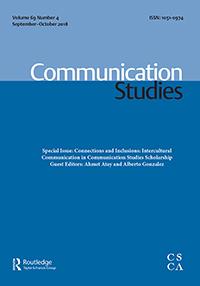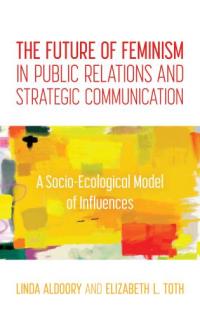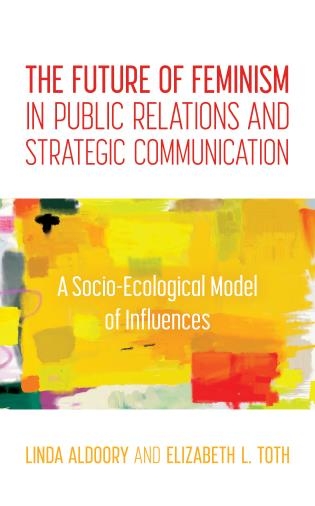Linda Aldoory

Education
Ph.D., , Syracuse University
Research Expertise
Gender
Health Communication
Public Relations
Linda Aldoory, Ph.D., is Associate Dean for Research and Programming for the College of Arts and Humanities, and Professor of Communication. She is Director of the Maryland Center for Humanities Research. She holds affiliate appointments in the School of Medicine and School of Public Health, as well as in the Harriett Tubman Department of Women, Gender, and Sexuality Studies. She founded the Center for Health Communication Research at Maryland and directed it. She is also former Endowed Chair and Director of the Horowitz Center for Health Literacy. Aldoory studies public relations, feminism and health communication, with much of her work focusing on the effects of media messages and campaigns on underserved health populations. Her most recent grant was a partnership with the Prince George’s County Health Department to design health messages addressing pre-diabetes in Southern Maryland, from the U.S. Centers for Disease Control and Prevention. She has published a co-edited book, The Gender Challenge to Media (2001), and a co-authored book, The Future of Feminism in Public Relations and Strategic Management (2021), with Elizabeth L. Toth. Aldoory has worked on health campaigns for underserved populations for almost 30 years. She has consulted for agencies such as the FDA, USDA and the State of Maryland. Before academia, she worked for The Bronx Perinatal Consortium, a maternal child health organization in The Bronx, NY, and the American Psychiatric Association, on mental health campaigns.
Publications
Acquaintance, Coach, or Buddy?: Perceived Relationships between Chinese Women and Mobile Fitness Technology
This study uses relationship management theory as a framework to explore user-technology relationships developed by Chinese women who use mobile fitness technology for exercise and nutrition guidance.
Author/Lead: Linda AldooryNon-ARHU Contributor(s): Sumin Fang, lead author

Chinese women are among the most frequent users of fitness technology, and yet the least likely to adhere to a fitness regimen. Little research has been done on preference, use, and perceptions of mobile health tools. Research, however, has shown that women’s adherence to fitness technology has been low, and that relationship management theory might hold a key to understanding how perceived relationships might increase adherence to exercise regimens. This study uses relationship management theory as a framework to explore user-technology relationships developed by Chinese women who use mobile fitness technology for exercise and nutrition guidance. With 32 one-on-one in-depth interviews, short-term and long-term users were categorized and asked about trust, commitment, involvement and investment. Among the findings were three types of perceived relationships found, that of acquaintance, coach and buddy. The findings also highlighted three factors to facilitate long-term relationships between users and mobile fitness technology. These were social motivation, high perceived efficiency, and synchronized verbal feedback. Findings support the application of relationship management theory in digital health contexts and to increase fitness outcomes among young Chinese women.
COMM Profs Author New Book on PR and Feminism
Aldoory and Toth publish The Future of Feminism in Public Relations and Strategic Communication.
Author/Lead: Linda AldooryContributor(s): Elizabeth L. Toth

Professor Linda Aldoory and Professor Emerita Elizabeth Toth present a socio-ecological model for understanding and building a feminist future for public relations. Their approach acknowledges previous gaps in scholarship and practice caused by ideological, societal, mediated, and organizational factors constructing norms and expectations for gender and race. The book, entitled The Future of Feminism in Public Relations and Strategic Communication: A Socio-Ecological Model of Influences, was recently published by Rowman & Littlefield.
"Two of the field’s top feminist scholars have provided us with an ambitious and comprehensive assessment of gender in public relations. They have taken a wide lens, showing the interplay across levels of context. The volume provides a starting point for those new to the topic and a jumping off point for those eager to press forward."--Lana F. Rakow, University of North Dakota, Ph.D., professor emerita, Communication
"This book moves away from traditional liberal feminist inquiry into the pay gap and the glass ceiling and introduces a socio-ecological framework into PR scholarship. Drawing from sociology, cultural studies and environmental science, as well as international scholarship, the authors create a compelling case for studying women in PR and provide a thoughtful and reflective account of decades of scholarship and activism for equality of women in the PR industry."--Dr. Martina Topić, Leeds Business School, Leeds Beckett University, United Kingdom
Read More about COMM Profs Author New Book on PR and Feminism
‘Health literacy for all’: exploring the feasibility of an intervention to reduce health disparities among rural children
This study explores a health literacy intervention in two rural public elementary schools that have very different socioeconomic levels, educational achievement rates, and initial health literacy scores.
Author/Lead: Sarah AghazadehContributor(s): Linda Aldoory

Roughly one in five U.S. children live in rural areas and they are more likely than nonrural children to experience chronic illnesses, unfulfilled medical needs, and poverty – yet health literacy intervention research for rural children is lacking. Thus, this study explores a health literacy intervention in two rural public elementary schools that have very different socioeconomic levels, educational achievement rates, and initial health literacy scores. Findings show significant improvement in health literacy in the low-income school, such that the initial differences in health literacy between the two schools were no longer present at posttest (p < .001). There was a slight improvement in School 1 students' perceived confidence to communicate with healthcare providers, but School 2 students' communication confidence did not change from pre to post intervention. The hopeful outcomes suggest implications for future school-based interventions that teach young children about health communication, self-efficacy, and critical decision-making.
Integrating Health Literacy Into Core Curriculum: A Teacher-Driven Pilot Initiative for Second Graders
The purpose of the pilot project was to explore the feasibility of integrated health literacy lesson plans for second graders.
Author/Lead: Linda AldooryNon-ARHU Contributor(s): Sara Aghazadeh & Tamara Mills
Funding Agency:
Atlantic General Hospital

BACKGROUND
Limited research has addressed the effects of health literacy interventions in elementary schools. However, school-aged children's health literacy is critical because children make decisions about their health every day. The purpose of the pilot project was to explore the feasibility of integrated health literacy lesson plans for second graders.
METHODS
A pretest-posttest evaluation was conducted with second grade students following implementation of health literacy lessons that were integrated into core curriculum (language arts, science, and social studies).
RESULTS
Health educators, a hospital/health care system, and a school district developed a partnership. A research team of teachers, administrators, health literacy experts and health care organizations designed and implemented health literacy lesson plans. A developmentally appropriate measure of health literacy was adapted from the Newest Vital Sign. Data showed that students' health literacy scores significantly increased after implementation of 4 lesson plans.
CONCLUSIONS
This was an exploratory, pilot project that provided a useful starting point for discussing how to integrate health literacy into elementary school curriculum. An interdisciplinary team developed integrated health literacy materials that acknowledged the needs of teachers, the resources available, and the developmental stages of children. This intervention serves as a model for future health literacy initiatives in schools.
Communication and Control: Hearing the Voices of Low-Income African American Adults to Improve Relationships with Healthcare Providers
This exploratory study uses relationship management theory to understand how African Americans who are medically underserved perceive the quality of their relationships with healthcare providers.
Author/Lead: Samantha StanleyContributor(s): Linda Aldoory
Non-ARHU Contributor(s): Chatham, Allison
Patient-provider relationships can either impede or encourage patient utilization of healthcare services and adherence to treatment. Given the significant health disparities found among low-income African Americans, it is imperative to understand this population’s experiences with healthcare providers and how to improve their patient-provider relationships in order to increase successful treatment outcomes. Relationship management is a well-tested theory that examines factors that improve outcomes between organizations and their publics. This exploratory study uses relationship management theory to understand how African Americans who are medically underserved perceive the quality of their relationships with healthcare providers. Focus groups were held with low-income African American adults. Findings reveal that communication is key to improving trust, but other characteristics needed for a quality relationship were lacking, particularly perceived commitment, which impedes better healthcare. The low-income, medically underserved context influenced participant perceptions of factors such as commitment, but participants also expressed efficacy in feeling in control of healthcare situations, which may help them maintain quality relationships. This study offers theoretical elaboration as well as practical suggestions for how providers may wish to address an important population of patients through communication.
The Gender Challenge to Media: Diverse Voices from the Field
Edited volume examining gender and media in the early 21st century.
Author/Lead: Elizabeth L. Toth, Linda Aldoory
Focusing on mass communication, this work provides a gender perspective that is also informed by the intersections of race, class, and sexual orientation. Its goal is to challenge professionals to think differently about their own communication contributions to society.
Read More about The Gender Challenge to Media: Diverse Voices from the Field


